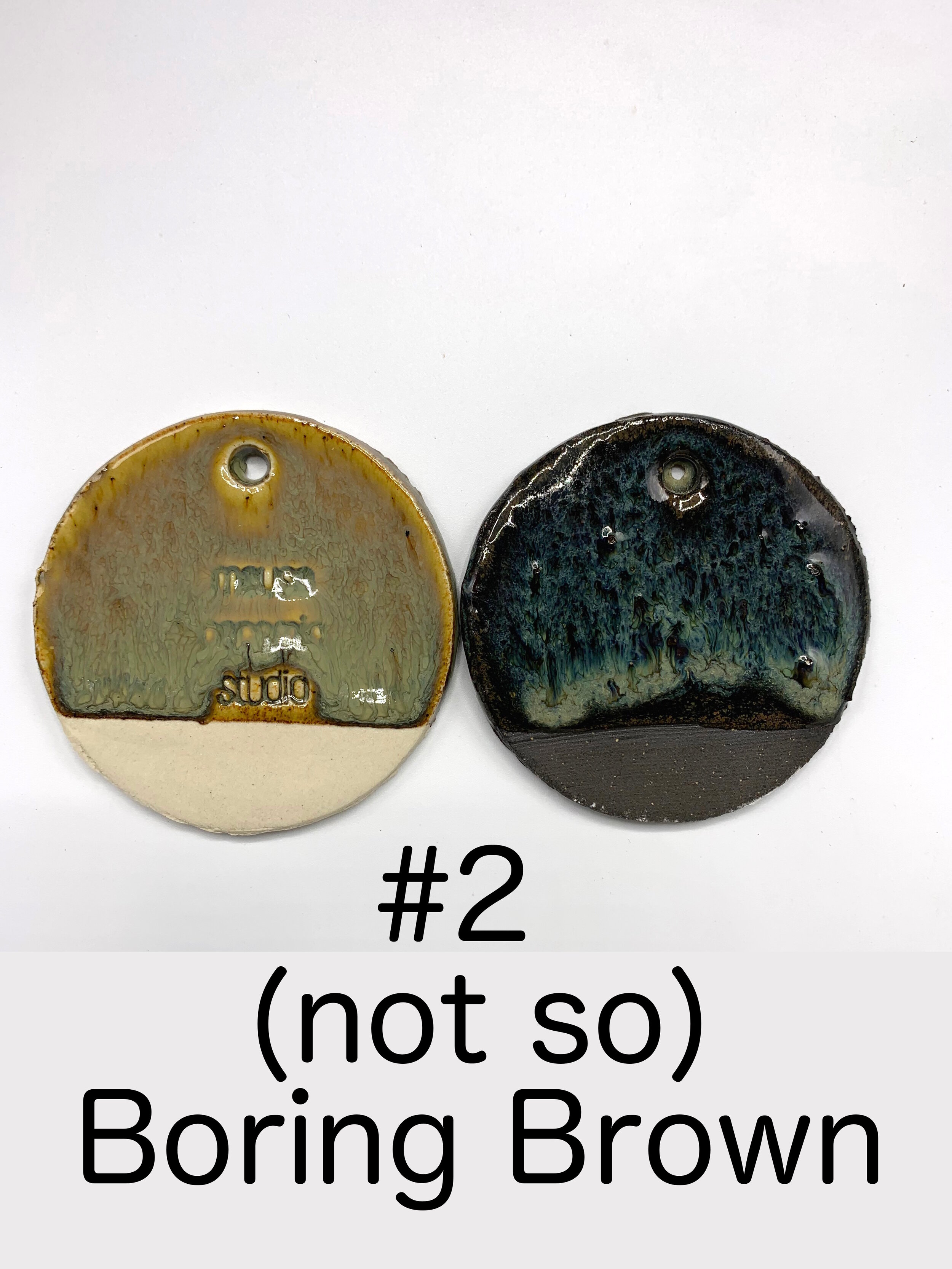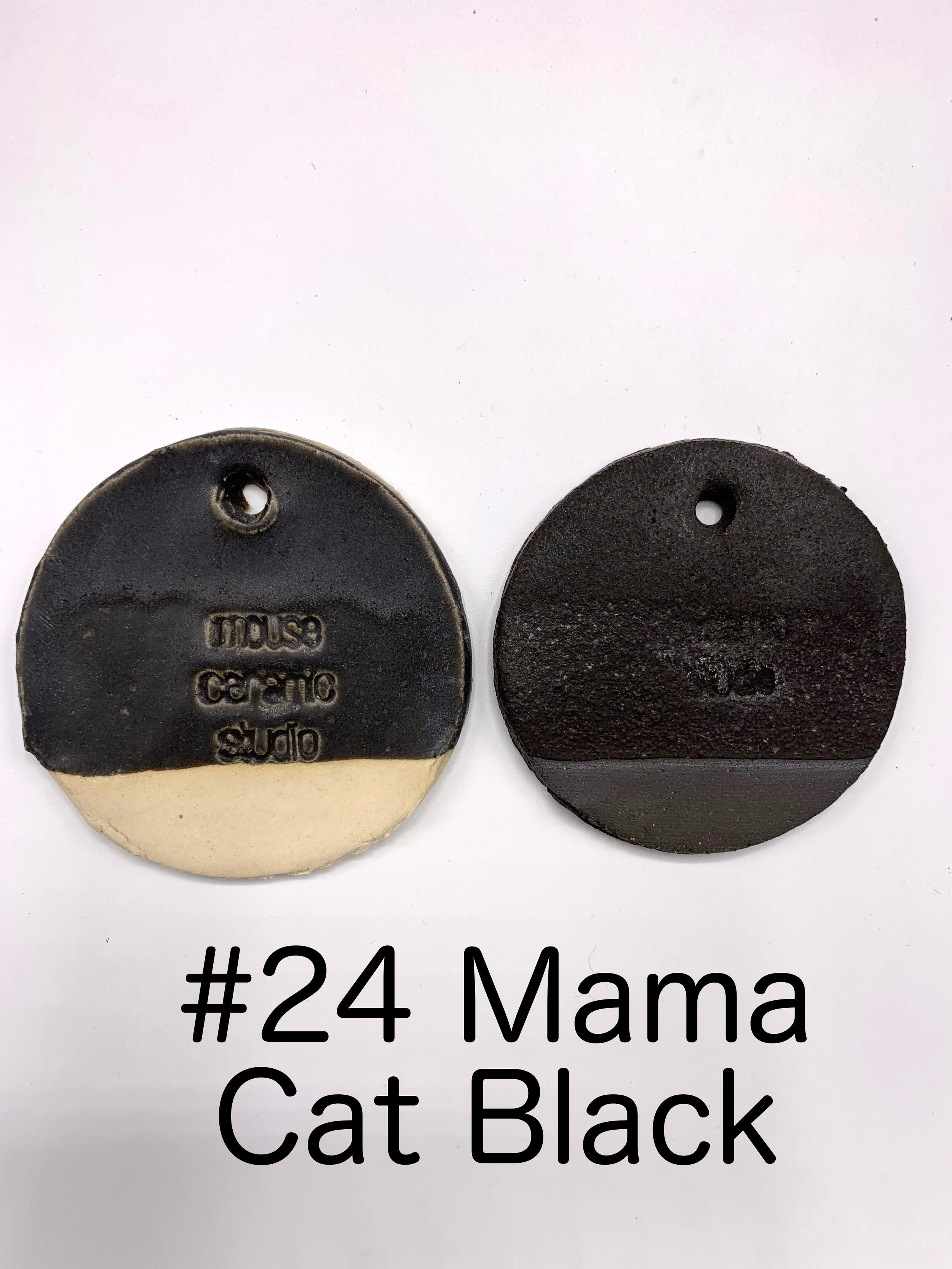Here is a little more information on each glaze that we sell. Our glazes are numbered and all are formulated to be fired at cone six in an oxidizing atmosphere. The glazes will appear different on different clay bodies and some have a learning curve to get the to look just the way you want.
#1 Clear
This is a good clear that fits clay bodies well if it is thin. This glaze tends to crackle the thicker it is applied.
#2 (not so) Boring Brown
This is a relatively runny brown glaze on white clay but it transforms on dark clay to reveal variegated blues.
#3 Dry Rosé
A semi-matte pink glaze that goes white the thicker the glaze is applied. Keep it thin to see the pink.
#4 Ruby
A gorgeous red when thin and a more obscured purple-white when thick. Keep thin to see the ruby red color.
#5 Glaze #5
This glaze may not have a name but it does have a reputation, it turns blue when layered over creamy glaze #6. Alone it is a slightly runny brown.
#6 Creamy II
This glaze was formulated by us after trying successfully to recreate a commercial glaze. It is stable and matte when thin and a little more runny and shiny when thick. This glaze breaks brown on dark clay with texture.
#7 Hematite
This amazing glaze was also made when trying to recreate a commercial pewter but it is even better because it does not run. Metallic and reliable this glaze is not food safe.
#8 Sapphire
This blue glaze is the sister to #16 celadon and was made when adding cobalt by mistake, but we think it was the happiest of mistakes. This glaze is semi transparent and gets more deep blue the thicker it is applied. It can crawl if the bisque is dusty or if the glaze is too thick.
#9 Tenmoku
This is a cone 6 take on the classic cone ten glaze, it will run if applied thick and makes great combos.
#10 Bottle Glass
A very special glaze that we found in Europe. Bottle Glass is very very fluffy and has a tendency to settle in its liquid form. It can be very tricky to work with as it should not be touched after it dries as its very very powdery. It is matte green when thin and shiny crackle when thick. A very fun glaze to play with.
#11 Glossy White
A very white (toilet bowl) glaze that is specially made to be very brilliant and not dingy. It is very stable and reliable, one of our favorites.
#12 California Sun
This golden glaze is reliable and will not run if properly applied. It is dark brown when thin and a golden earth yellow when thick.
#13 Sky Sail
This glaze is a bit unpredictable/inconsistent so we are not currently offering it.
#14 Something Cool
This glaze is on its way.
#15 Lauren’s Denim Blue
Believe it or not this glaze was a recipe that we traded from Brazil that was supposed to be a chrome pink. We are happy it is a denim blue and are happy to share it with you. It is more expensive because it contains quite a lot of tin.
#16 Celadon
We are a big fan of cone 6 celadons, they range from blue-green, ours is inspired by the Song dynasty Chinese celadons which are jade colored. This glaze is semi-transparent and pools in crevices, making it wonderful for carved porcelain. The darker the clay, the darker this glaze appears.
#17 Chrome-Tin
One of our most unpredictable glazes due to the very fine balance of chrome and tin in the matrix, the glaze can appear almost clear if thin, but when thick creates tones of purple-pink/red. Have no expectations when using this one.
#18 Blue
A nice basic blue with a beautiful deep color, it doesn’t like to be applied thick, and will crawl if you put too many layers.
#19 Val Cushing
This gorgeous glaze developed by American potter Val Cushing and is a studio favorite. It is considered by many to be the perfect glaze as it is not too shiny or too dry, it is a perfect satin with a smooth feel.
#20 Alabama Rain
A recipe John Britt shared when he did his workshop at Mouse in early 2020, a glossy warm oatmeal-type glaze.
#21 Reactive Glaze
This is a local reduction copper red glaze that only goes “red” when thick, it is amazing on dark clay because of the kaleidoscope of colors that you get from a single glaze.
#22 Vanilla Bean
A stable satin base with small black granules which give it a speckled appearance. Shake or stir your glaze well as these specks settle to the bottom as the glaze ages.
#23 Electric Blue
This glaze is very dry and not recommended for food containers, in fact the glaze is almost more akin to an underglaze in its fired appearance. The blue is intense and gets darker with more layering. Dark clays make this glaze a bit volatile.
#24 Mama Cat Black
This matte black is smooth when applied thin and textured and rough when applied thick or on dark clay bodies.

















